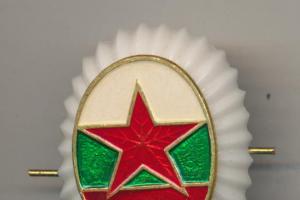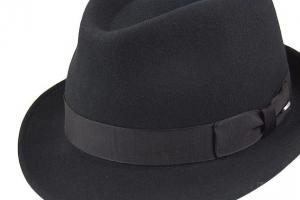It is best to propagate thuja by cuttings, because there is a lot of fuss with the seeds (stratification), but there is little use.
Propagation of thuja by cuttings is a very simple process. Even simpler than it is usually described somewhere, because the survival rate of this plant is very good. You just need to know when and how.
The first time (in the 90s), when I got someone else’s cuttings of western thuja, in winter, I put them in water (in some book I read about this method of obtaining roots, then the Internet was in its infancy). In ordinary water, on the windowsill. I didn’t use any medications. I changed the water periodically.
In general, I hoped that the result would be positive, I really wanted to get my own conifer, but I didn’t even expect that it would work out. Of the 6 pcs, 3 pcs took root in the water. In the spring, I immediately planted them in the ground. The roots were so bad (frail) and therefore only one copy survived, from which my collection came.
Or rather, this is not a collection, because the variety is the same, but simply as many specimens of thuja as I need for landscaping my plot, because I learned how to propagate it from cuttings. Now, if I “steal” a twig of a conifer that I like somewhere, I do it in the spring season, so as not to torment the plant in water, but to immediately plant it in the ground.
Now that I have several adult specimens, I distribute material for cuttings to neighbors, because thujas, like any trees and shrubs, require pruning every year to form the crown and to correct the growth of branches, otherwise the conifer will grow leggy, sparsely leafy and not very beautiful.
Of course, now I have more than one coniferous plant, the western thuja. But I like her so much!!! A stately beauty of considerable stature, fluffy and soft... Much nicer than juniper, because it is not prickly. Suitable for a living fence, whether in a continuous or sparse row. Single plantings are great both on the lawn and in some composition with ornamental shrubs and flowers. It reacts to pruning instantly, you can cut it a couple of times a season. The annual growth is decent, so if you want to restrain its height growth, you need to cut it at least 3 times a season.
Reproduction of thuja occidentalis
Let's return to our propagation of thuja by cuttings.
The cuttings you plant should be:
- with heel
- small size
- without extra branches
If you purposefully take a cutting directly from an adult plant, then you just need to tear off a small branch, pulling it at the attachment point so as to disconnect it from the heel. Be careful that there is no damage to the torn area.
You can cut a large number of specimens from the branches that are obtained as a result of formative pruning. In this case, select larger branches and tear off all the branches with the heel directly from them.
Next, to prepare the cutting for planting, you need to cut off all the needles on the lower part of the stem, from the heel to the top, leaving only a couple of upper “leaves”, one of which (the lower one) is left whole, and the top one is cut in half. You can also do both “leaves” » cut in half. This is done in order to reduce the green mass and to awaken the buds.
An additional measure that promotes the formation of roots on the entire surface of the branch that will be in the ground is longitudinal furrowing, which can be used on cuttings of any plants. In this case, you can do without it, because you have a heel on the handle. And on thin branches it is more difficult to make grooves.
Reproduction of western thuja (and any other conifers) is done in the following sequence:
- a place is being prepared for planting cuttings. This can be just a bed where the soil is looser, with the addition of large quantity sand for water permeability. It's better in the shade, for example, near a fence.
- Use a stick to make a slightly inclined poke to the size of that part of the cutting that will be buried in the ground
- the prepared cutting (see above) is dipped into the root and inserted into this hole, also obliquely.
- the soil around needs to be compacted
- water
- It is advisable to cover it with something so that the soil does not dry out ( plastic bottles or a short greenhouse)
Propagation of thuja by cuttings in spring
 Cuttings for the second spring, after the snow melts (I haven’t loosened the ground yet). A couple of seedlings did not survive the winter...
Cuttings for the second spring, after the snow melts (I haven’t loosened the ground yet). A couple of seedlings did not survive the winter... It is best to propagate thuja by cuttings in the spring, because the soil moisture is most favorable and stable. In this case, you don’t even have to cover it with anything, just make sure that the soil is always moist and doesn’t dry out.
In spring, any plant tries to take root and survive. Such a program is laid down by life itself. Therefore, propagation of thuja by cuttings in the spring gives the highest percentage of success.
Many videos show large cuttings with second and even third order branching. It’s probably taking root, since they’re showing it. But I am of the opinion that the cutting should not be so large, because the large green mass can destroy it due to the mismatch between the tops and roots: there are no roots yet, and the top part is very large.
Even if the cutting is very small, it will take root. And grow up in a big tree Even a small cutting can do it.
Personally, I don’t cover the thuja cuttings with anything, I don’t create any greenhouse conditions:
- natural selection works, only the strongest survive
- greenhouse conditions reduce the survival rate when transplanting to permanent place
And in winter they go the usual way, in the garden. I don’t replant anywhere. But in the spring it is clear that the strongest specimens have survived: they have undergone winter acclimatization in this particular area, where they will continue to grow. This is also a big plus.
After transplanting the thuja to a permanent place, for two years it will adapt to its new place of residence, including during the winter and spring periods, when there are nuances of caring for and growing thuja.
 Tags:
Tags:
Representatives of the cypress family have become welcome guests in the personal gardens of a large number of people. Therefore, gardeners are interested in propagating thuja by cuttings in the fall at home. This procedure is simple and entertaining, accessible to any purposeful and inquisitive owner. True, you should understand that breeding a thuja is only half the battle; you also need to plant it correctly and provide it with proper care.
Advantages of propagation by cuttings
Although the method of propagating thuja by cuttings produces less hardy plants than the seed method, This technique has a number of significant advantages:
- When breeding varietal thuja using cuttings, there is a guarantee that the resulting young plants will retain all maternal characteristics, including appearance, and this is not always available during seed propagation.
- Cuttings allow you to obtain full-fledged healthy seedlings suitable for planting in a permanent place after three years.
When propagating thuja by seeds, taking into account natural stratification, it will take as long as 5-6 years to obtain full-fledged ready-made seedlings.
The vegetative method also has a significant drawback. Even if all the cutting rules are followed, the survival rate of seedlings, as a rule, is no more than 75%, and in case of violation of the cultivation technology coniferous plants the amount of healthy planting material is sharply reduced.
It is preferable to carry out cuttings of conifers in the autumn. In this case there will be a greater chance of rooting maximum quantity twigs, because sap flow slows down in autumn, which means fewer cuttings will die from lack of moisture. True, it will take more time for rooting than when harvesting in the spring, when intensive plant growth occurs.
How to grow an apple tree seedling from a seed at home
Cutting process
Experienced gardeners successfully propagate thujas, like other conifers, on their own. To increase the number of these representatives of the cypress family, there are plant propagation methods such as seed and cuttings. In the second case, the harvesting of shoots can be carried out in spring or autumn. To decorate, for example, a hedge, you will need a lot of thuja seedlings. Propagation by cuttings in autumn is the most popular way to increase the number of conifers.
Preparation of shoots
You should not prepare planting material for breeding evergreen thuja immediately with the onset of autumn. It is better to choose a cloudy October day for this event when active leaf fall has already begun. First of all, you should take a responsible approach to the selection of shoots. Cuttings should be made from branches that are 3-4 years old. It is better to choose the apical shoots of an adult tree, then future seedlings will form a beautiful, lush crown of the correct shape.
You should select absolutely healthy shoots, making sure that there are no peelings of bark from the wood. It is important to ensure that the cuttings have lignified bark, otherwise the rooting process is unlikely to be effective. The optimal length of the prepared shoot should be 25−40 cm. It is better not to cut the branch, but to break it off so that wood and lignified bark remain at its end - the so-called heel. A piece 3 cm long from the heel should be freed from scaly foliage.
Rooting methods
After completing the procedure for preparing cuttings for plant propagation, you can begin to choose a method for rooting them. You can root thuja both in water and in a substrate or diaper.
Propagation of orchids using cytokinin paste
The easiest method for rooting woody branches is in water. Pour water into the prepared container. Place only the heel in it, avoiding the leaves touching the surface of the liquid. Up to three cuttings should be placed in each jar. All that remains is to place the containers in a cool place with natural light.
The disadvantage of the method is that plain water practically does not contain the nutrients necessary for the normal development of plants; cuttings take root poorly and then take root poorly.
The method of propagating thuja in a substrate does not have this drawback, although it is more labor-intensive. The procedure in this case will be as follows:

You can root cuttings in another simple way. For this you will need: peat moss, plastic bag, baby diaper and root growth stimulator. The sequence of actions will be as follows:

How to grow a rose from cuttings at home
This method is good because the peat moss and the absorbent layer of the diaper do not allow the moisture to evaporate and the heels of the cuttings are constantly in a wet state. In addition, sphagnum has a bactericidal property, preventing rot from appearing on the branches. This method is highly effective and in a simple way rooting of thuja, which does not require special care.
Care during the rooting period
In the first case, when only water is used to root autumn thuja cuttings, care consists only of timely replacement of the liquid. To do this, you need to remove the cuttings by wrapping their heels with a damp cloth. Wash the container and fill it with water again to the previous level. You can add a little potassium permanganate to the liquid. Return the branches to their place.
The second method, using a substrate, requires timely and regular watering, and this should be done with a spray bottle so as not to wash off the soil from the plants and expose the heels. It is important to prevent the soil from drying out and forming lumps, but excess moisture can lead to rotting of the resulting roots.
The simplest, in terms of care, is the third method of propagating thuja - using sphagnum. Peat moss and the retaining layer of the diaper retain moisture very well, so additional moisture is rarely required. It is enough to periodically visually check the bag with cuttings and, based on the presence or absence of condensation inside the bag, decide on additional wetting of the sphagnum and diaper.
Decoration local area or garden plot will become beautiful tree or shrub. Thuja may be an excellent choice for such a case. It's evergreen ornamental plant Originally from East Asia, it is distinguished by its dense crown and ease of care. Thanks to the ease of cutting thuja branches, you can create graceful natural shapes. Therefore, people who grow plants on their own will be interested to know what it means to propagate thuja at home.
Propagation of thuja at home by seeds
Offspring produced by seed method, is more resilient than plants propagated by cuttings. However, the process of growing a seedling is quite long - from two to six years. For planting, only fresh seeds are required, which ripen in cones. After collection, they are placed in a warm, dark place, and after two or three days they open. A prerequisite will be their placement in wet sand. After a couple of days, plant the seeds in large pots or boxes with a specially prepared mixture: for this, take part peat and sifted sand, three parts turf soil. Then the containers are transferred to the basement and left for three months. After this, the boxes (pots) are taken out and left in a warm place, without excess sunlight. After the shoots appear, you should gradually accustom the plant to fresh air and sunlight, as shown in this photo.

The plant should be replanted at the beginning of summer, after fertilizing the planting site with a small amount of ash, peat and sand. In some cases collected seeds left in the ground for the winter so that they lie under the snow (natural stratification). And then they are sown to a depth of 0.5 cm, sprinkled with pine sawdust. It is necessary to provide the plant with protection from sun rays, and cover the shoots with special shields. You can feed with a weak solution of slurry (one part manure to 20 parts water). After about a year and a half, it will be possible to determine the type of plant growing - columnar or spherical.

How to propagate thuja at home by cuttings
A better known method of propagating thuja at home is by separating the cuttings (cuttings). You will need a lignified shoot with a length of 20 cm; it is better to cut it at the end of April, beginning of May, at extreme case- second half of June. The cutting is separated by cutting (it will be good if some of the wood of the donor plant remains on it), after which the bottom of the shoot is cleared of needles and immersed in water for 2 hours. The soil mixture must be made from equal parts of peat, turf soil and river sand. In order to disinfect the substrate, it must be treated with potassium permanganate. The harvested shoot is planted to a depth of 3-4 cm.

You should also provide appropriate external conditions for germination of the cuttings. The greenhouse must have sufficient humidity (70%) and be sunny - therefore use a transparent greenhouse cap. Don't forget about ventilating the area. To maintain the required level of humidity, use spraying.
You can find out more about the described methods of breeding thuja in the following video:
Now you know how thuja is propagated at home, and it will not cause any particular difficulties. By following these tips, you can grow a wonderful ornamental plant and implement your innovative thoughts on decorating your garden and surrounding area. And then the thuja will delight you with its evergreen crown for many years.
While studying landscape design at home, you gradually realize that there are no more grateful plants than thuja. They delight with their greenery all year round, unpretentious in care, aesthetic and easy to shape.
But they have one drawback - certain difficulties that accompany the propagation of thuja, especially if such a task is performed for the first time in life. In practice, this can only be done in two ways - separating cuttings from an already mature plant, or collecting ripened seeds. What to choose? You will understand as soon as you read the article to the end.
- Subsequent care of cuttings
- Spring planting
- Reviews and comments
Propagation by seeds: subtleties
Painstaking and lengthy work with seeds will pay off with the emergence of hardy sprouts that can resist diseases and atmospheric manifestations.
The only thing that can scare you away from this method of independently increasing the number of plants in your garden plot is its time-consuming nature.
It will take 3 or even 6 years to grow, and it is not a fact that an adult will demonstrate all the qualities of its ancestor.
Before trying to propagate thuja with seeds, you need to collect the August unopened cones and place them in a warm place until they open their scales.
In just a couple of days, you can shake out the seeds and put them in a bag made of natural fabric, in which they can lie for 2-3 years without harm to their germination.
With the onset of winter, a procedure is carried out to stratify the planting material, for which it is buried in the snow along with a bag.
The following steps regarding how to properly propagate evergreen thuja with its own seeds are as follows:
- In the spring, a mixture of sand and peat, taken in equal proportions, is prepared for sowing;
- In containers, beds are made with a depth of no more than 2 cm;
- The top of the plantings is mulched with dry pine needles or the same dried peat;
- As soon as the first shoots hatch, they need to be provided with the correct watering regime, protected from direct sunlight, fertilized, freed from weeds and loosened;
- In late autumn, or, more precisely, with the onset of stable frosts, young thuja is either brought into a lighted basement, or covered with spruce branches if it is sown on an open ridge;
- Picking seedlings is done only after three years, and transplanting to a permanent place - after 5-6 years.
Cuttings: how does it happen?
The main advantage of propagating conifers by cuttings is that a full-fledged plant is obtained within three years. Moreover, it will be exactly the same as the mother’s, but it will have to go through certain difficulties in terms of survival. The fact is that rooted cuttings survive transplantation, disease and sudden temperature changes very poorly.
There are the following subtleties in propagation by cuttings:
- Cut planting material it is possible only from those branches that have already reached two years of age;
- The length of each shoot cannot be less than 20 cm;

- It is better not to cut the cutting with pruning shears or a knife, but to break it off from the mother branch so that a “heel” of bark is formed at the end;
- The planting material is placed in a container of water for several hours, in which the growth stimulator and rooting agent are diluted in advance;
- The cultivation of thuja by cuttings occurs in a greenhouse filled with river sand, peat and turf soil, taken in the same volume. By the way, the soil mixture must be disinfected with a burgundy solution of potassium permanganate;
- Branches are planted in dried soil at a distance of 5-7 centimeters. They should be buried no more than 2 cm;
- The greenhouse must be covered with a transparent film and shaded from direct rays of the sun.
Subsequent care of cuttings
Having figured out how to practically propagate thuja at home, we move on to the conditions for growing them after rooting. They consist of regularly ventilating the greenhouse, spraying the plantings with a spray bottle and watering with slightly heated water.
After a couple of months, when the first roots form, you can move on to hardening and fertilizing with special fertilizers for coniferous vegetation. Having fulfilled these requirements regarding how to propagate evergreen tree, get ready that in the fall the thuja, or rather the greenhouse with its cuttings, will need to be covered with spruce branches.
Never insulate your plantings with polyethylene, which can cause them to dry out in the spring, or with leaves or sawdust, which can cause the formation of mold or mildew.
Spring planting
If you manage to grow a thuja and protect it from freezing, it can be planted in a permanent place with the onset of stable above-zero temperatures.

Please note that the ephedra loves good lighting which is required to form a correct and beautiful crown.
Self-propagation of thuja is an excellent activity for avid gardeners and lovers of landscape design.
If you do everything correctly, you will definitely be able to organize your own nursery and make good money.
One of the most common coniferous plants used for landscape landscaping is a representative of the cypress family - thuja occidentalis or, as it is also called, tree of life.
The plant is distinguished by its durability (up to a hundred years on average), frost resistance, unpretentiousness to weather conditions and soil composition. Tree needles contain essential oils that are beneficial for health and air purification.
The tree crown may be pyramidal or spherical shape, it can be easily modified. Thuja is used to create hedges and various decorative compositions, both in personal plots, and in park areas.
- Brabant– fast-growing thuja, up to 4 m tall. Each year the height increase is approximately a third of a meter and the crown diameter is about 15 cm. The tree is compact, pyramidal in shape, with its lower part reaching the soil. The color is light green with a golden tint at the tips of the needles, retaining its shade in winter.
- Brabant gold- has a yellowish tint. The conical shape of the crown is only found in young trees. With age, the branches of this variety of thuja grow horizontally or arched.
- Emerald– a variety of slow-growing and stable thuja. Grows up to 5 m, crowns grow up to 2 m in diameter. Young trees have a narrow pyramidal shape; with age, the crown takes on the shape of a wide cone. The needles have a bright green color. For good growth Requires moist, fertile soil.
- Dannika- a slow-growing, low-growing spherical thuja. Grows up to 1 m in both height and diameter. The color is dark green, becoming coppery in winter. The variety is unpretentious, but grows best in clay soil.
Propagation of thuja by planting seeds
 Collection and storage of seeds for propagation of thuja
Collection and storage of seeds for propagation of thuja
Thuja seeds ripen closer to autumn. Tree cones containing seeds are collected before they have opened and the seeds do not spill out. Then the cones are sifted and laid out to dry in a warm, dry room. They usually open the next day and the seeds are easy to collect. Seeds should be stored in closed containers in a room with air temperature +5°C and humidity 10%. Under such conditions, they retain the ability to germinate for 3 years.
Timing and preparation for sowing
- Sowing thuja seeds best done in spring. Before doing this, you should check them for germination. To do this, the seeds are placed in small disinfected trays with damp paper at the bottom and left in a lighted and dry room. After about 5 days, the seeds should begin to germinate. For sowing, you need to select seeds whose roots have grown to about half the size of the seed itself.
- They do not require special preparation for sowing, but for a more efficient germination process, seeds can be soak for about 12 hours in water room temperature or keep it in wet sand for the same amount of time. To prevent fungal diseases, it is worth treating the seeds with a formaldehyde mixture at the rate of 1 part 40% formaldehyde to 300 parts water. Then the seeds must be dried for two hours and sowed immediately. Otherwise, the germination rate of thuja seeds will decrease.
Sowing and care
- It is better to sow on ridges of dry soil 10-15 cm high or 20-30 cm if the ground is wet. The width of the ridge is about a meter, and the paths between them are about 40 cm. Thuja seeds are planted to a depth of 0.5-1 cm at the rate of 5-8 grams per meter. After sowing, the ridges should be mulched with leaves, sawdust or small straw in a layer of about 3 cm.
- Shoots should ascend about a month later. They need to be watered regularly, fertilize the soil and be protected from the sun to avoid burns to the thuja root necks. To do this, you can use shields woven from branches. The seedlings will become sufficiently strong in 2-3 weeks and the shields can be removed. Naturally, in cloudy weather there is no need for such darkening. Thuja crops are quite dense, sometimes up to 80 seedlings per meter, so they should be thinned regularly, removing weak and diseased plants.
Advantages and disadvantages of the seed method
The main advantage of this method of propagating thuja is the high probability of healthy seedlings, and the grown trees are more hardy and resilient. Disadvantage of propagation by seeds - long terms breeding (from 3 to 5 years) and the fact that the thuja does not always retain its parental decorative form.
Propagation of thuja by growing season
Timing and preparation of cuttings for propagation of thuja

Caring for seedlings during the rooting process

Advantages and disadvantages of the vegetative method
The advantage of this method of reproduction is in preserving decorative form parent thuja and shorter tree propagation periods compared to the seed method. However, young seedlings in this case require more careful care, they are less resistant to weather changes, and they have a lower percentage of rooting and survival.
Beautiful bushes of decorative thuja






















